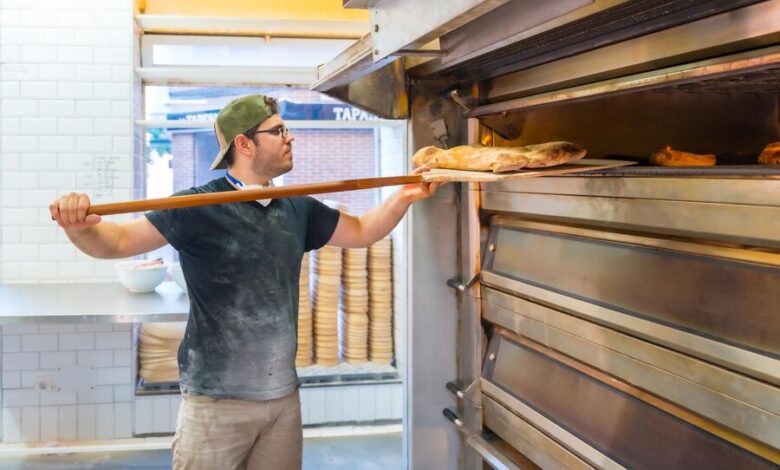
Heat Treatment – If you heat treat some metals, you can use them differently. In tech and business, this is a big step. One of the most popular metals is steel. To heat them depends on how they were made. If these metals will be used for industrial gear or fine tools, it’s important to know how they change when heated. It’s even more important to see this difference when making temperature-sensitive tools like a hot holding cabinet where the materials need certain thermal properties.
The Nature of Steel and Aluminium
Different elements make up steel and aluminum. Their melting points and atomic structures are other factors that change how they respond to heat treatment. Steel is mostly made up of iron and carbon. It is a strong and useful metal. On the other hand, aluminum is a light metal that doesn’t contain iron. It doesn’t rust and is great at moving heat around. These differences mean that heat should be used differently on different things.
Heat Treatment Processes for Steel
Usually, to change how hard, strong, and flexible steel is, it is annealed, cooled, and reheated. How steel reacts to heat depends a lot on how much carbon it has.
- Annealing: To make steel smoother, heat it to a certain level and slowly cool it down. The metal’s grain structure is smoothed out, making it easier to shape and machine.
- Quenching: Steel is heated and then quickly cooled in water or oil to strengthen it. This weakens the structure, and the next step is often to maintain it.
- Tempering: When steel cools, it is heated to a lower temperature to make it stronger and less likely to break.
These ways can get steel to the right state for making tools, car parts, or building materials, among other things.
Heat Treatment Processes for Aluminium
Some physical features of aluminum mean it needs different heat to melt than other metals. The properties of aluminum alloys come from precipitation hardening, also known as age hardening. This is different from how steel does it.
- Solution Heat Treatment: When you heat aluminum to a certain point, the alloying elements break down, and a stable solution appears. After that, it is quickly cooled down to keep its shape.
- Aging (Natural or Artificial): The alloying elements settle down over time or with controlled burning, which makes the material stronger. This helps with things that need to be strong, like airplane parts.
- Annealing: You can also heat aluminum to make it more bendable, which makes it easier to shape or machine. The temps are lower than those used for steel, though.
Key Differences Between Steel and Aluminium Heat Treatment
- Hardening Mechanism:
When steel cools, it mostly turns into martensite. How much carbon is in the steel affects this process. Aluminum alloys are strong because of a process called precipitation strengthening. It takes place when specific amounts of alloying elements fall to the ground. - Thermal Conductivity:
Aluminum cools and heats up faster than steel because it can move heat around better. The temperature must be carefully controlled during treatment to avoid twisting or changing shape. - Grain Structure Changes:
Heat is often used to make steel stronger and tougher. This changes the grain structure in many ways. To work with aluminum, you must change how the alloying elements are spread out in the metal body. - Application-Specific Treatments:
Steel is great for tools and other heavy-duty uses because it is hard and doesn’t wear down easily when heated. Heat treatment tries to make metal as strong and light as possible. It can be used in cars, planes, and heating systems like holding cabinets.
Applications in Temperature-Sensitive Equipment
This is a big deal when you need to stabilize temperatures, like when making hospital or food service equipment. For example, a Hot Holding Cabinet must be able to keep temps fixed so it doesn’t break or bend.
- Steel in Hot Cabinets: Steel is strong and lasts long, so it can be used to make things. Stainless steel that has been heated is also very immune to rust, which makes it great for clean rooms.
- Aluminum in Hot Cabinets: Because it is light and well-conductive, aluminum is a good element for moving heat. Heat treatment aluminum parts are often used for parts inside a machine that needs to heat up quickly and evenly.
When manufacturers know the differences between heat treatment methods, they can pick the right material for each part. If you do this, the parts will work well and last long.
Conclusion
It is very different how to heat steel and aluminum because they are made of various materials. Steel gets stronger and lasts longer after being cooled and tempered. Particulate strengthening, on the other hand, makes aluminum lighter and less likely to rust. They are used differently because of these changes, especially in places where temperature performance is important, like Hot Cabinets. Makers can make parts that can be used in many different scenarios by giving each one the right amount of heat.
Visit Paid Services for more informative blogs.




